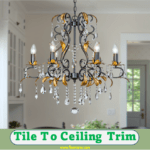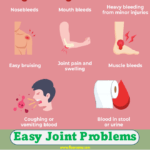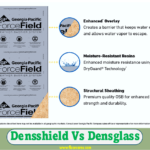Stucco Over Foam Problems: Stucco over foam problems can be repaired with traditional stucco to ensure a durable and lasting finish. Repair any styrofoam stucco system with proper application methods and materials for a successful outcome.
Install stucco as exterior wall cladding over rigid foam insulation with proper preparation to provide water management and a sound substrate for the stucco. Unlike traditional stucco, which utilizes natural ingredients and mesh, EIFS stucco uses layers that add synthetic materials.
InsulFoam T&G insulation panels can help reduce cracking problems associated with stucco walls, allowing stucco to retain its beauty longer. However, stucco is susceptible to cracking, especially in regions with extreme temperature fluctuations, requiring periodic maintenance to keep the finish looking pristine. EIFS is a non-load-bearing building cladding system that provides exterior walls with an insulated, water-resistant finished surface.
Applying Traditional Stucco As Repair
Traditional stucco applications can be an effective solution when repairing styrofoam stucco systems. The process involves carefully following specific procedures to ensure a successful repair. Understanding the steps for repairing styrofoam stucco systems with traditional stucco is crucial for achieving long-lasting results.
Procedure For Repairing Styrofoam Stucco Systems
1. Assessment: Assess the damaged area of the styrofoam stucco system to determine the extent of the repair needed.
2. Cleaning: Thoroughly clean the damaged area, removing debris, loose stucco, and dirt to prepare the surface for repair.
3. Application of Polyurethane Adhesive Caulking: Apply polyurethane adhesive caulking to ensure proper adhesion between the existing styrofoam and the new traditional stucco layer.
4. Layer Application: Apply layers of traditional stucco to the damaged area, ensuring a smooth and even application that blends with the existing stucco finish.
Polyurethane Adhesive Caulking Application
- Surface Preparation: Clean the surface area thoroughly to ensure proper adhesion of the polyurethane adhesive caulking.
- Caulking Application: Apply the polyurethane adhesive caulking evenly, covering all damaged areas effectively.
- Smoothing: Smooth out the caulking to seamlessly transition the existing styrofoam and the traditional stucco layer.
By following these steps and paying close attention to detail during the repair process, it is possible to effectively apply traditional stucco as a repair for styrofoam stucco systems.
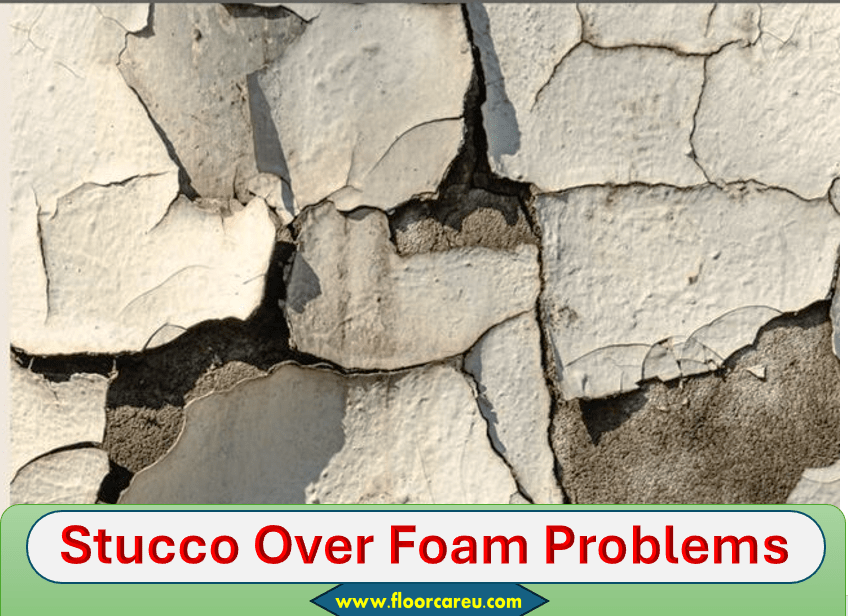
Foam Stucco Trim Installation
Install foam stucco trim to address stucco over foam problems. Achieve a seamless finish by carefully applying and blending the foam pieces, ensuring a durable and aesthetically pleasing result. Trust professional guidance for a successful installation process.
Preparing And Installing Foam Trim
Installing foam trim is an essential step for stucco over foam. Proper installation ensures a seamless transition between different surfaces and adds a decorative touch to the overall appearance of the stucco finish. Here are the key steps to follow:
- Start by preparing the surface where the foam trim will be installed. Ensure it is clean, dry, and free from debris or loose materials. This will ensure proper adhesion of the foam trim.
- Measure and cut the foam trim pieces to the desired length and shape. For precise cuts, use a sharp knife or a foam saw.
- Apply a polyurethane adhesive caulking to the back of the foam trim. This will provide a strong bond between the trim and the surface.
- Place the foam trim onto the prepared surface, ensuring it is aligned properly. Press it firmly to ensure maximum adhesion.
- Secure the foam trim in place by using nails or screws. Make sure to position them at regular intervals to provide stability.
- Once the foam trim is installed, smooth and shape the edges with a wet float. This will help to blend the trim seamlessly with the stucco finish.
Finishing Techniques And Appearance Enhancement
When it comes to foam stucco trim installation, certain techniques and methods can enhance the appearance of the finished product. Here are some tips to consider:
- After installing the foam trim, you may want to apply a second coat of stucco to blend it further with the surrounding surface. This will create a more seamless look.
- To prevent hairline cracks, it is recommended to butter the joints of the foam trim with a bonding agent before applying the finish coat.
- You can also use a scratcher tool to create notches on the foam trim. This adds depth and texture, enhancing its visual appeal.
- When it comes to covering the nails used to secure the trim, you can hide them with a stucco finish or acrylic finish.
By following these techniques and paying attention to detail, you can achieve a professional-looking stucco finish with foam trim. These steps ensure proper adhesion, stability, and a visually pleasing result. Remember always to use high-quality materials and tools for the best outcome.
Benefits Of Stucco Over Rigid Foam Insulation
Stucco over rigid foam insulation offers numerous benefits, including increased energy efficiency, improved moisture resistance, and enhanced durability. The combination of stucco and foam insulation provides a seamless and attractive exterior cladding that can withstand the elements while reducing energy costs.
Say goodbye to stucco over foam problems and enjoy the advantages of this effective insulation solution.
Stucco over rigid foam insulation offers several significant benefits for exterior wall cladding. This approach provides water management for the wall and ensures a strong and stable substrate for the stucco.
Water Management
Water management is crucial for the longevity and performance of any exterior wall system. Stucco over rigid foam insulation creates a protective barrier against water infiltration, preventing moisture from penetrating the wall assembly. The combination of the stucco finish and foam insulation helps to repel water, ensuring that it does not seep into the wall and cause damage.
When installing stucco over rigid foam insulation, it is essential to locate the wall’s water control layer. The water control layer is typically positioned behind the insulation, over the exterior sheathing. By correctly identifying and placing this layer, you can effectively manage water and prevent potential moisture-related issues.
Substrate Strength
A sound substrate is essential for the successful application of stucco. With rigid foam insulation acting as a base, stucco over foam provides a durable, stable, and secure substrate for the stucco finish. The foam insulation helps to reinforce the wall and improve its resistance to external forces such as impact, temperature changes, and settling.
You can further enhance the substrate’s strength by using the right type of foam board, such as InsulFoam Tongue & Groove (T&G). InsulFoam T&G insulation panels are designed to float on the studs and absorb building movement without transferring stress to other joints. This resilience reduces the cracking problems typically associated with stucco applications.
In conclusion, stucco over rigid foam insulation offers notable water management and substrate strength benefits. This combination protects against moisture infiltration, ensuring a sturdy stucco finish base. Properly locating the wall’s water control layer and selecting the appropriate foam board can achieve a long-lasting and reliable exterior wall cladding system.

Eifs Vs. Traditional Stucco
When considering stucco over foam problems, evaluating the differences between EIFS and traditional stucco is essential. Both methods have distinct compositions, advantages, and disadvantages that can impact the choice for your project.
Composition And Layers In Eifs
EIFS (External Insulation and Finishing Systems) comprises layers of synthetic materials. The first layer comprises a polystyrene foam board, a fiberglass mesh, and a finishing coat. This composition distinguishes EIFS from traditional stucco, incorporating modern materials for insulation and aesthetic appeal.
Comparison Of Advantages And Disadvantages
| Aspect | EIFS | Traditional Stucco |
|---|---|---|
| Insulation | Offers superior insulation properties due to the foam board layer. | Lacks in-built insulation, requiring additional measures for thermal efficiency. |
| Flexibility | Allows for greater design flexibility and intricate detailing. | Typically limited in design options and detailing. |
| Maintenance | Requires periodic inspections to prevent moisture-related issues. | Generally low maintenance, with minimal risk of moisture problems. |
Optimal Foam Board For Stucco Application
The optimal foam board for stucco application plays a crucial role in ensuring the durability and performance of stucco walls. Choosing the right foam board can help minimize common problems such as cracking and ensure a smooth application process.
Insulfoam Tongue & Groove Features
InsulFoam Tongue & Groove (T&G) insulation panels are designed to float on the studs, absorbing building movement without transferring stress to other joints. This feature helps maintain the integrity of the stucco surface over time.
Reducing Cracking Problems With Stucco Walls
One key advantage of InsulFoam Tongue & Groove foam boards is their resilience, significantly reducing the cracking problems commonly associated with stucco walls. The high-quality insulation material helps provide a stable and durable substrate for the stucco application.
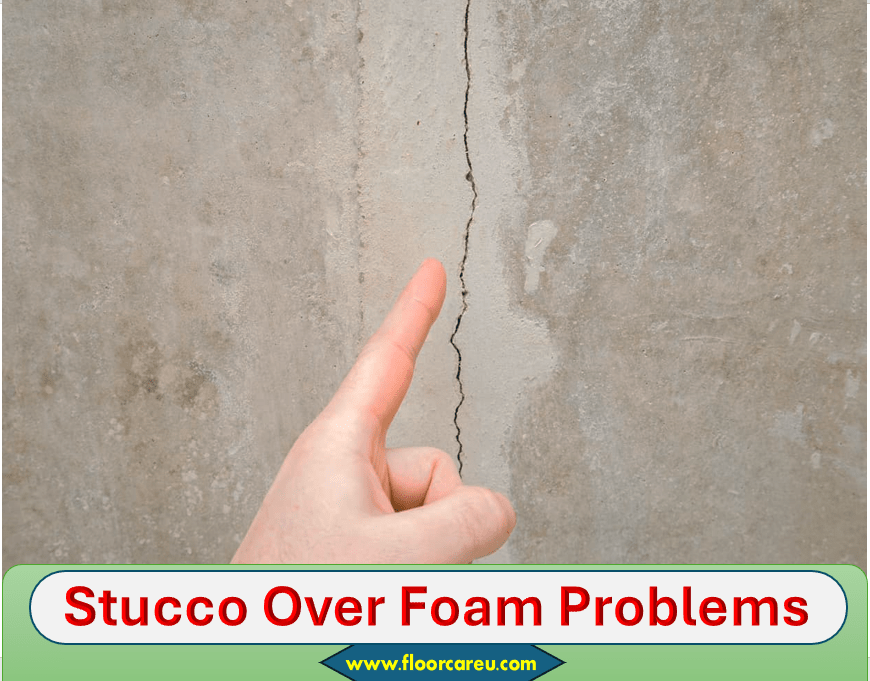
Frequently Asked Questions On Stucco Over Foam Problems
Can You Put Stucco Over Foam?
With proper preparation, you can install stucco as an exterior cladding over rigid foam insulation. This provides water management and a sound substrate for the stucco. Determine the location of the wall’s water control layer for effective installation. Stucco Over Rigid Foam Insulation is a suitable process.
What Is Stucco Over Foam Called?
Stucco over foam is known as External Insulation and Finishing Systems (EIFS) stucco, which uses layers of synthetic materials over a polystyrene foam board.
What Is The Best Foam Board For Stucco?
The best foam board for stucco is InsulFoam Tongue & Groove (T&G), known for reducing cracking and maintaining stucco’s beauty longer.
What Are The Disadvantages Of Stucco?
Stucco is susceptible to cracking, especially in regions with extreme temperature fluctuations. These cracks require periodic maintenance to keep the finish looking pristine. Stucco’s disadvantages include the need for ongoing upkeep due to potential unsightly cracks.
Can You Put Stucco Over Foam?
With proper preparation, you can install stucco as an exterior wall cladding over rigid foam insulation.
What Is Stucco Over Foam Called?
Stucco over foam is called External Insulation and Finishing Systems (EIFS) stucco. It uses layers of polystyrene foam board, fiberglass mesh, and a finishing coat.
Conclusion
Addressing stucco over foam problems requires thorough preparation and attention to water management. Proper techniques ensure the durability and aesthetic appeal of the exterior wall cladding. Understanding the differences between traditional stucco and External Insulation and Finishing Systems (EIFS) brings awareness to each system’s unique challenges and benefits.
High-quality foam boards like InsulFoam T&G can minimize cracking and upkeep. Implementing these insights will help maintain the integrity of stucco over foam applications.
